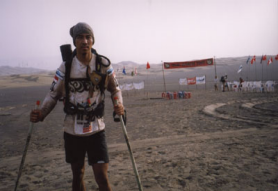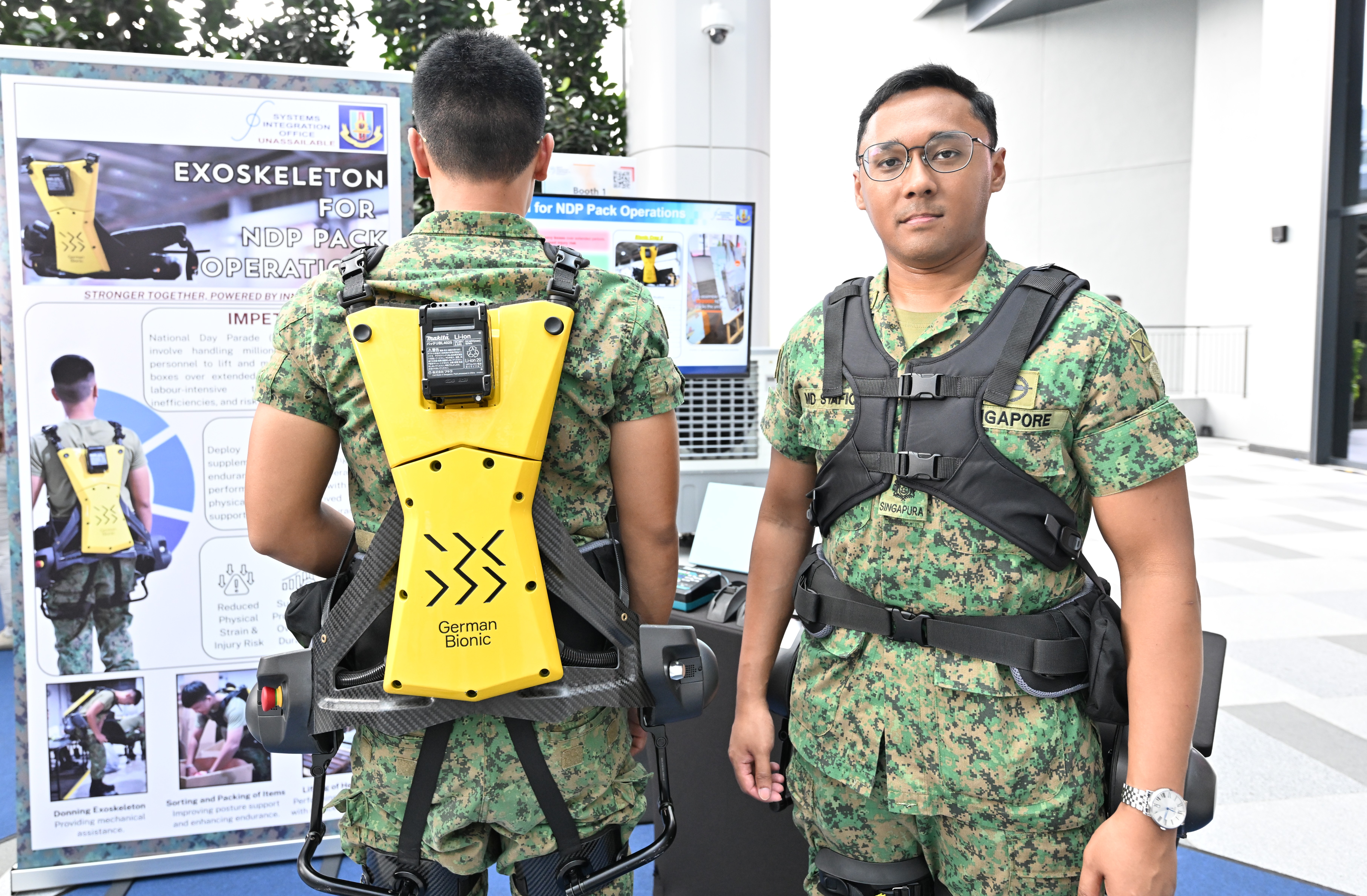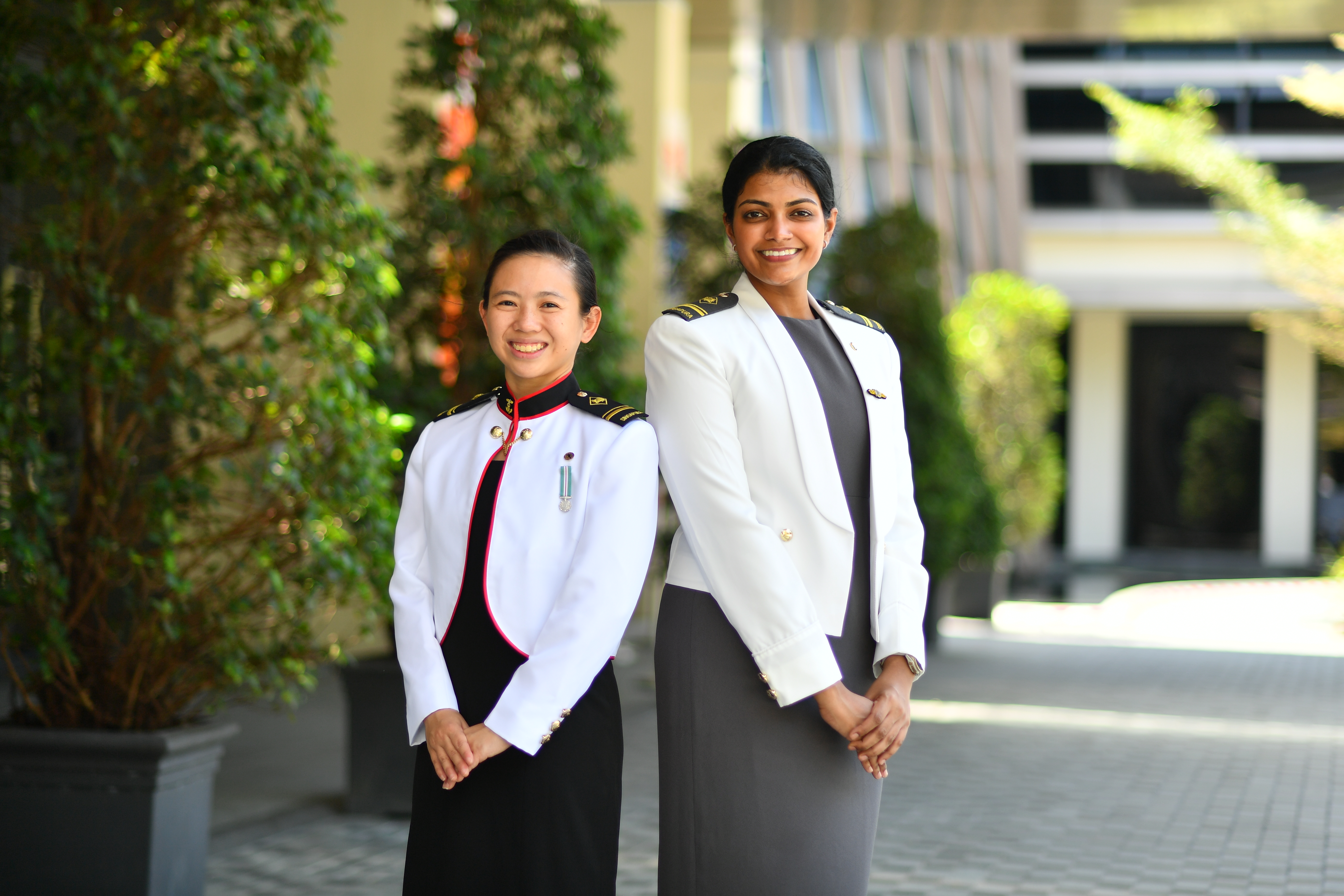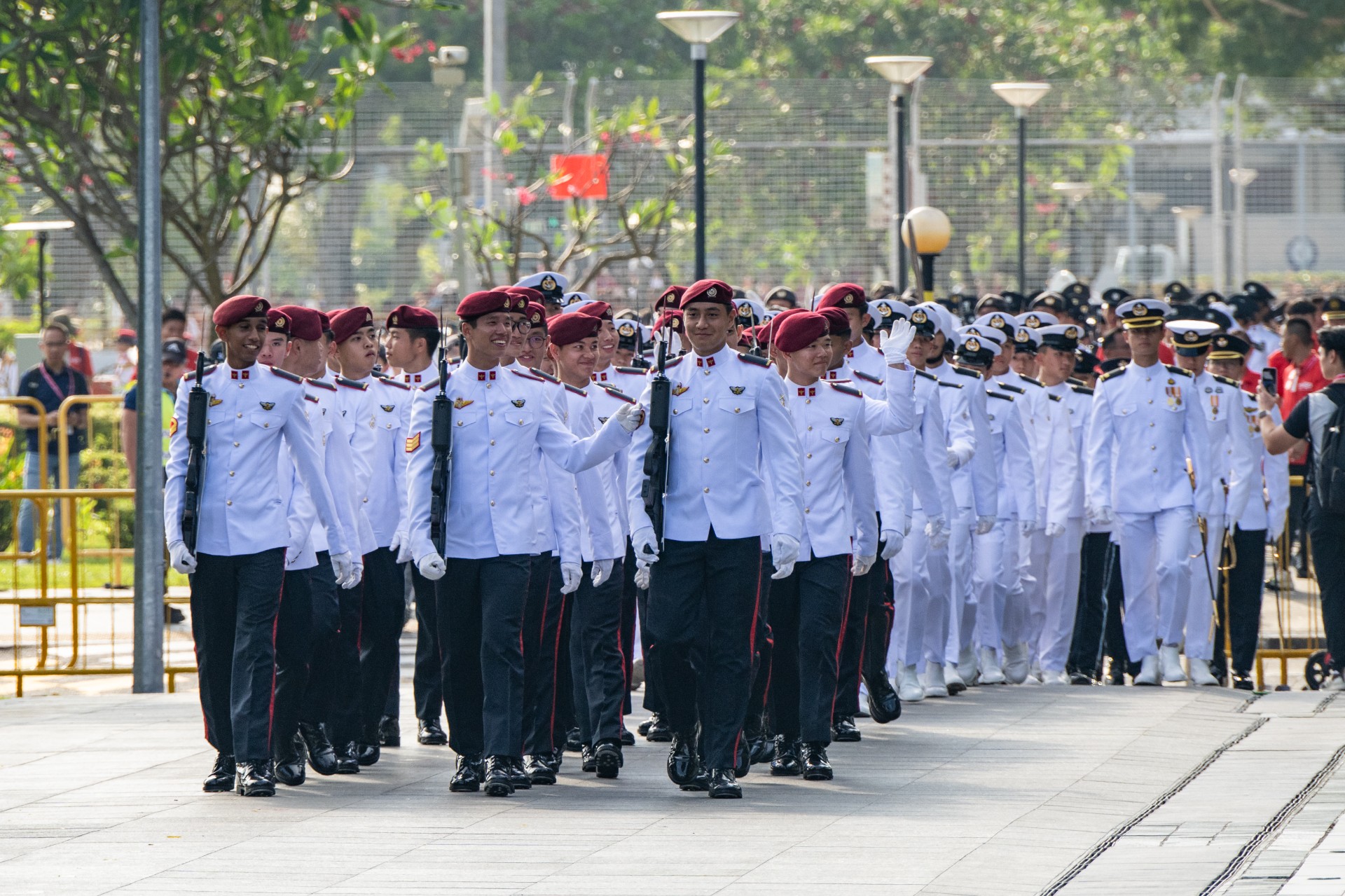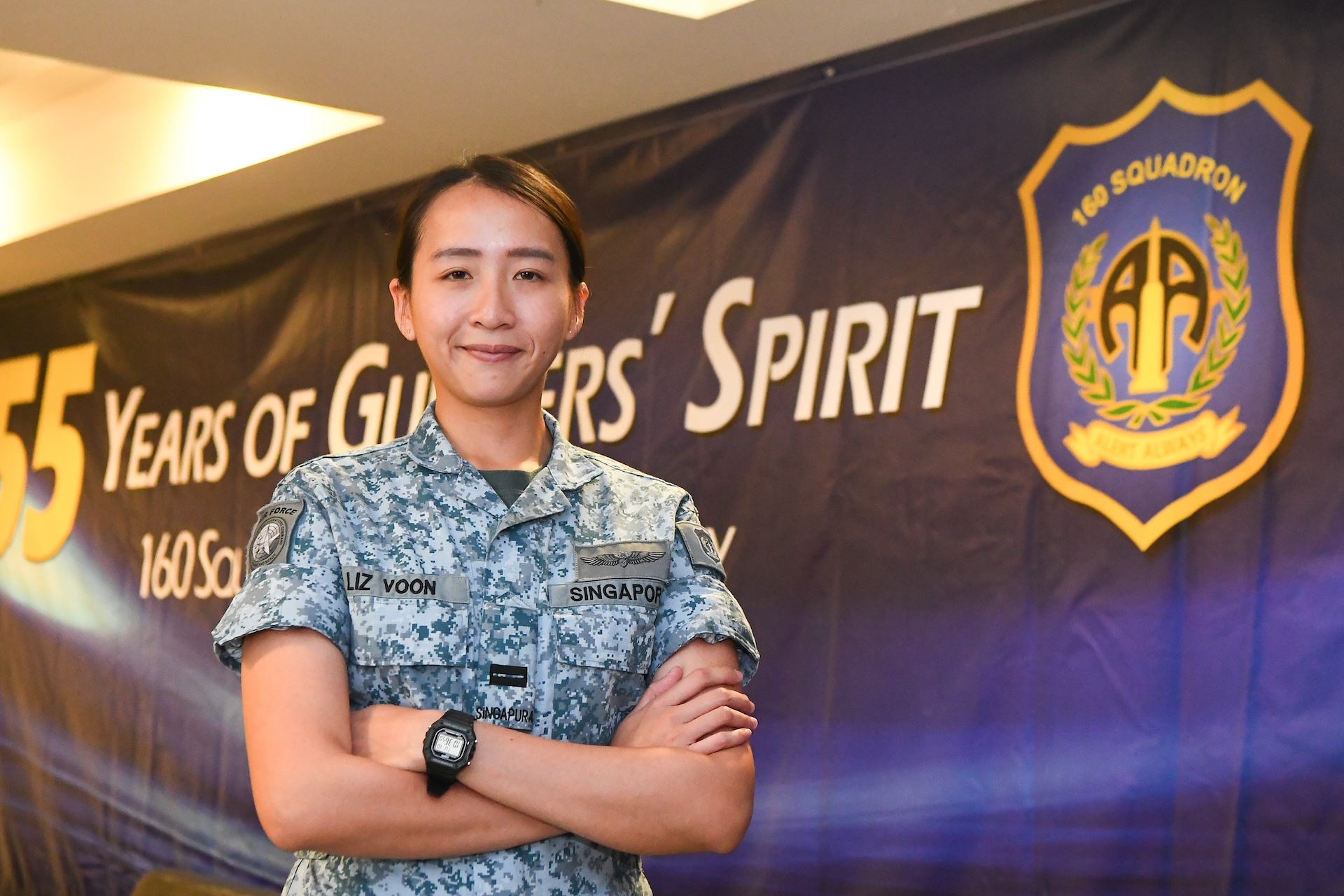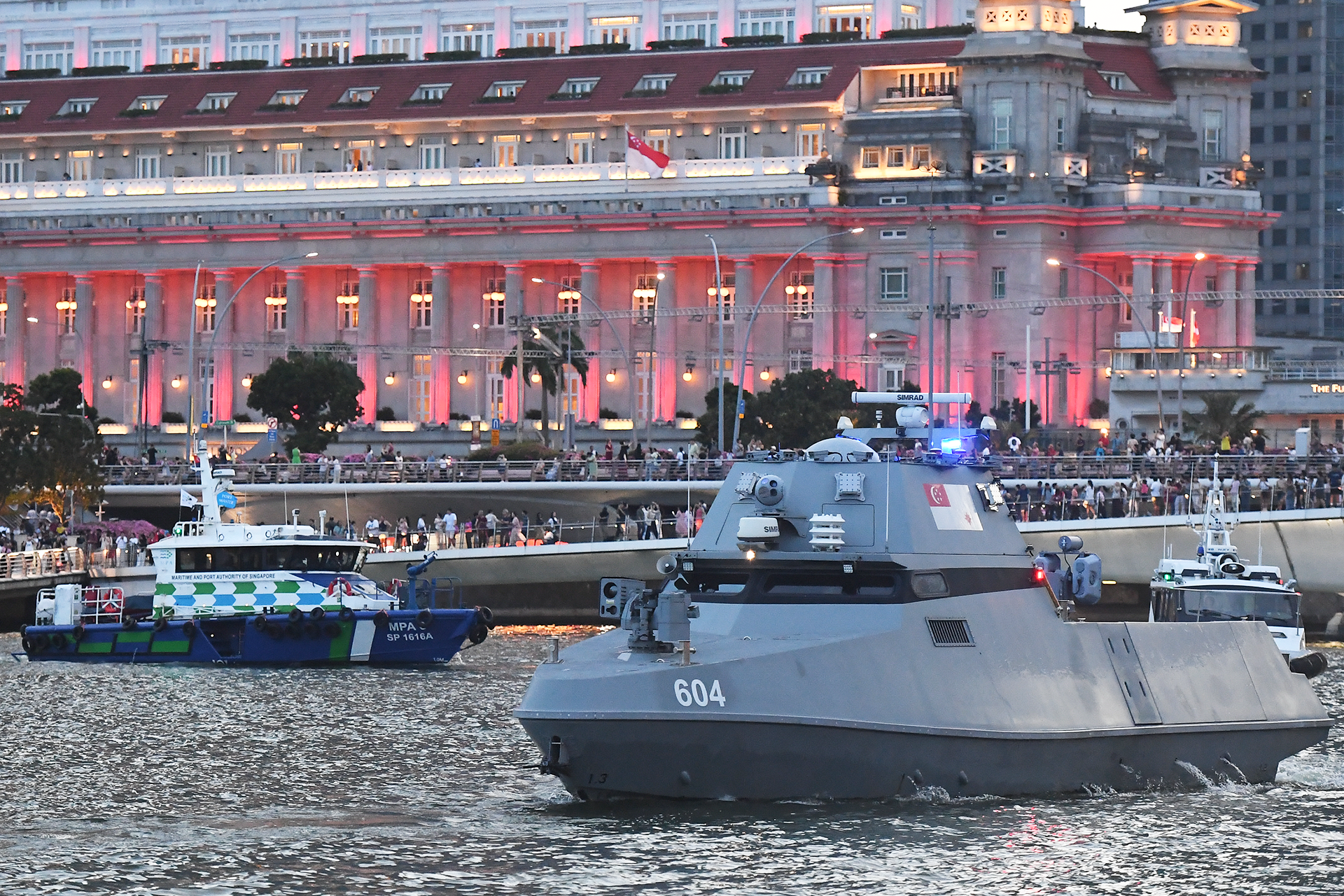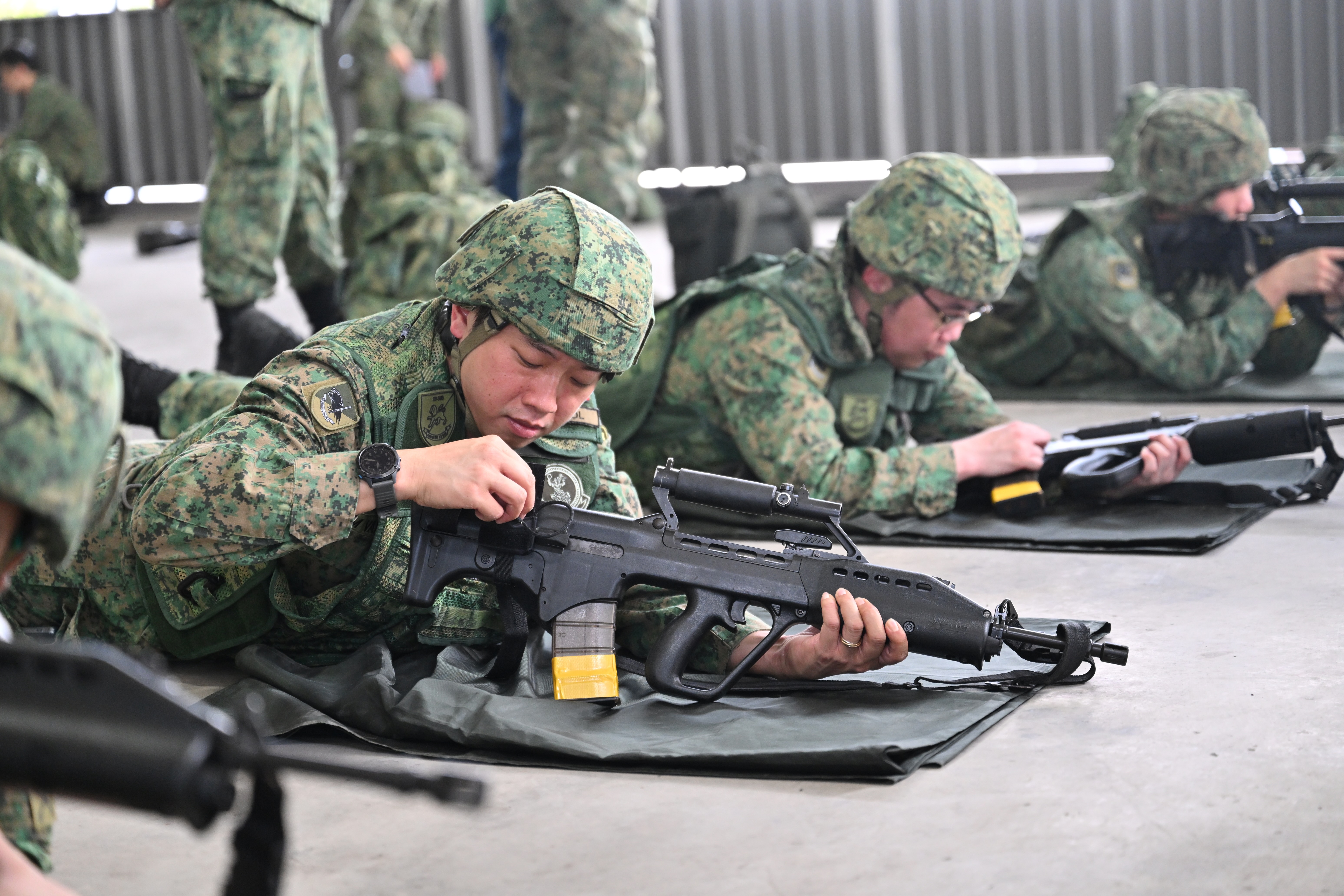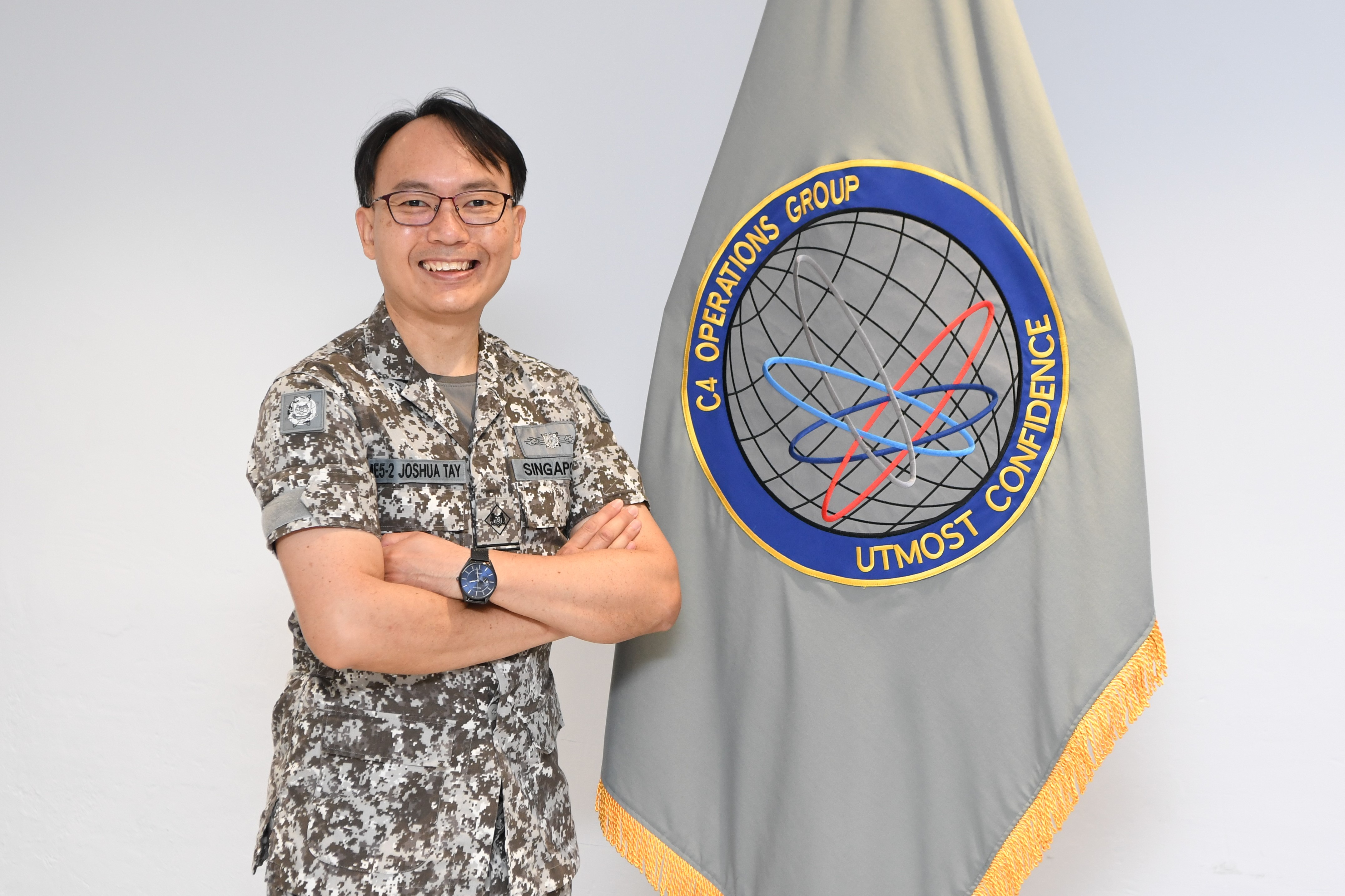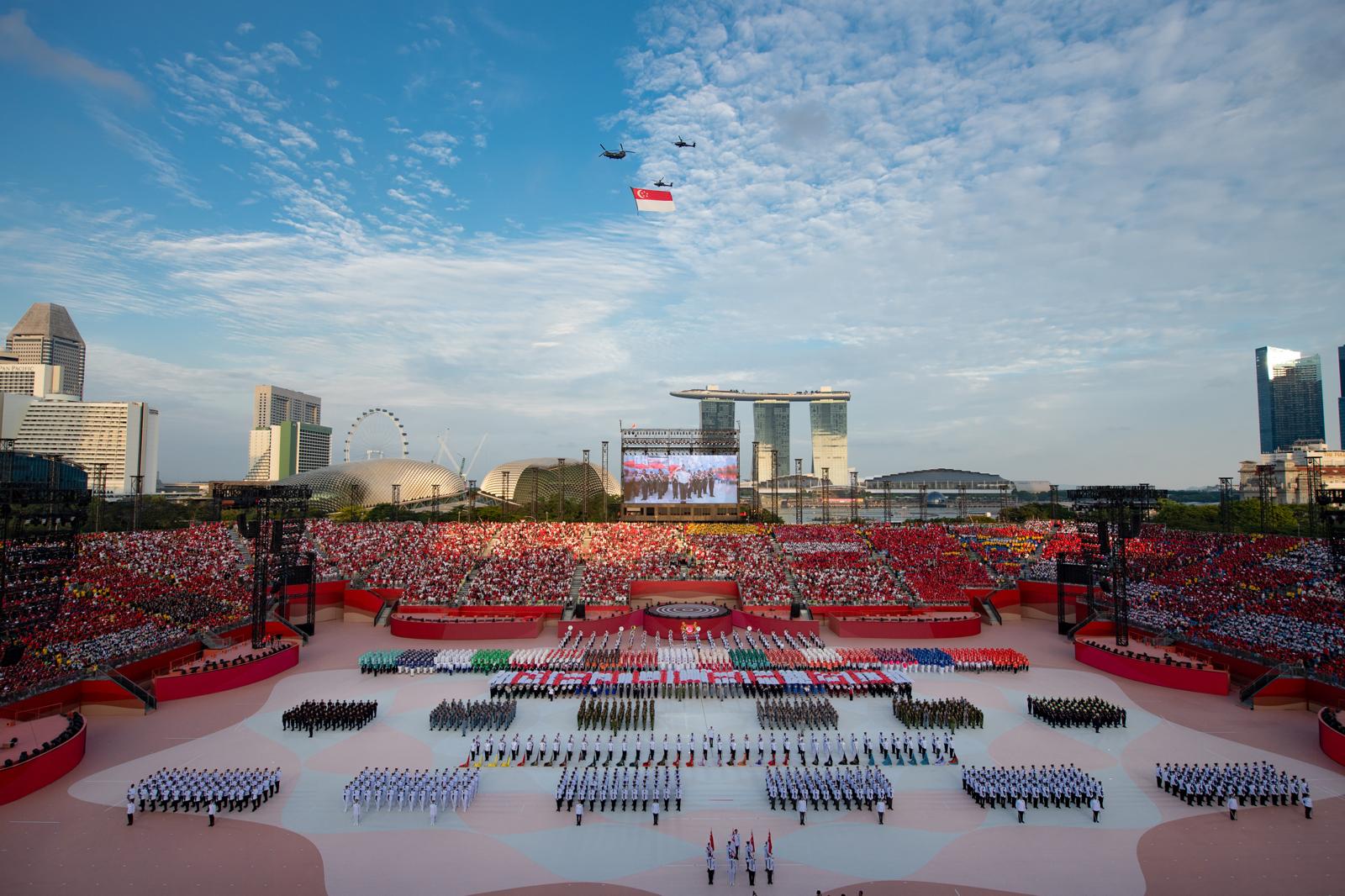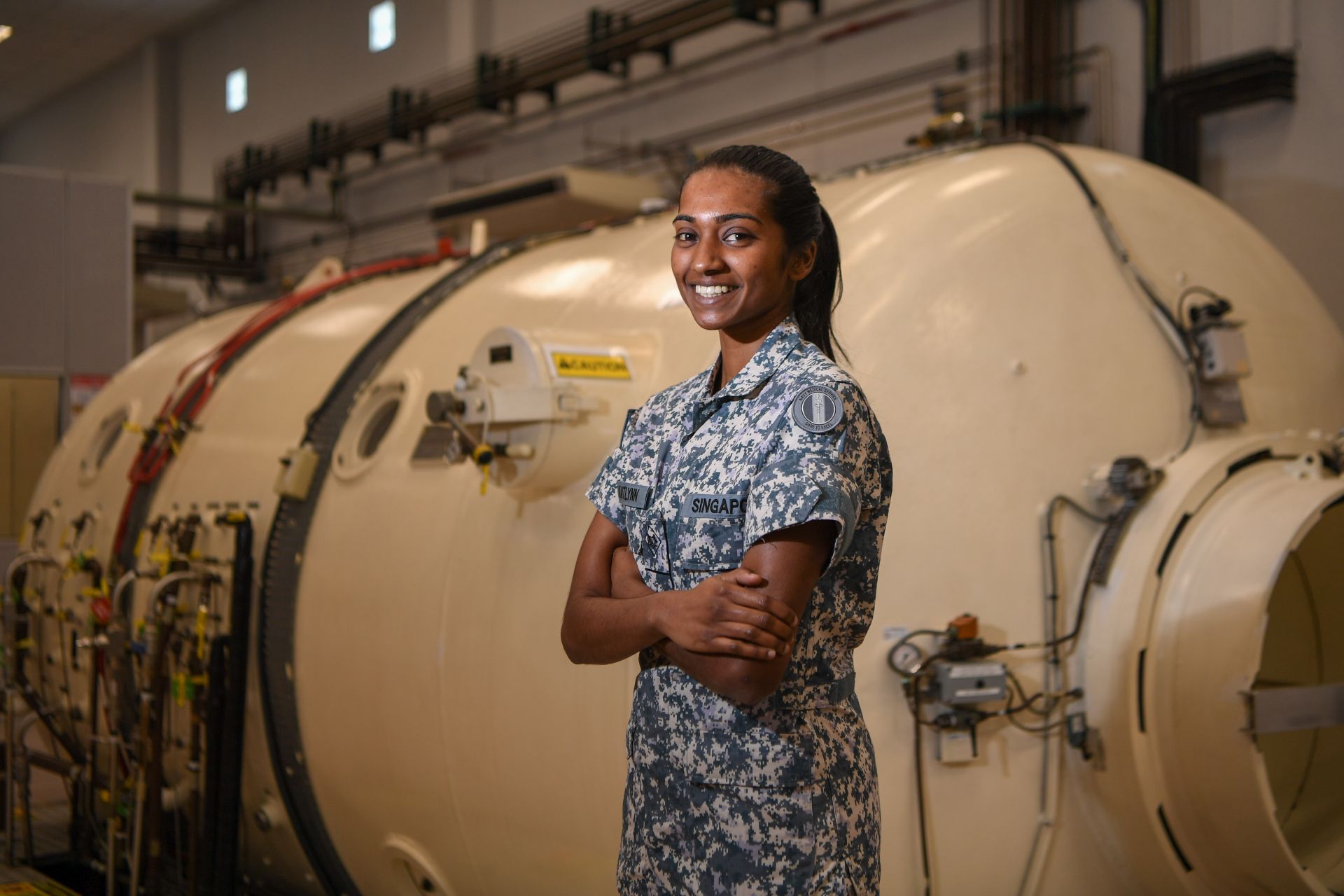THE GOBI MARCH: A COMMANDO'S HOLIDAY
PHOTO // MAJ Lien Choong Luen
Imagine taking part in a 250km-long foot race across one of the most desolate places in the world. You get a kick out of it, and you tempt fate again, and again.
The mercury hit the 50 mark and I was dehydrated.
The Camelback attached to my backpack had turned into a kettle under the burning sun, boiling the water in it. Every sip I took scorched my throat.
The inhospitable salt plains created a surreal white landscape reminiscent of snowfields that extended as far as the eye could see. There was nothing and no one in sight in the desolate terrain as I craned my neck for signs of the next checkpoint.
The last person I met was a racer seeking refuge in the shade of an abandoned truck. He suffered from severe dehydration and heat exhaustion; it was the end of the race for him. He was neither the first nor the last to go down on this, the longest stage.
My pack weighed down on my shoulders as I slowly pounded the kilometres, "35 down, 60 to go".
This was going to hurt.
It seemed like a good idea at the time
It all began innocently enough a few months earlier in Dec 04.
I had just completed the West Australia Ironman (WAIM) in under 12.5 hours. It was my first Ironman Triathlon, and I was feeling rather satisfied with my performance.
On the bus ride to the airport, I met a Wall Street banker who owned his own small investment house. Coincidentally, he had just completed the WAIM as well, and was on a quest to complete the other 22 Ironman triathlons within a year! He said this without conceit or bravado simply matter-of-fact.
Upon further probing, I learnt that he had been in a near fatal car accident and his wife had forbidden him to do some of the more intense races he used to take part in. And these were crazy: month-long trudges across the Alaskan wilderness and foot races in places so blistering the nylon shirts they wore melted!
Inspired by his adventures, I did some research and decided that my next holiday would be in China.
What the race is all about
The Gobi March is one in a series of races organised by a company called Racing the Planet. They stage 250km-long foot races across some of the more desolate reaches of the world, such as the Sahara desert, Atacama Desert in Chile, Gobi Desert and the Antarctic.
The Gobi March winds through the Turpan depression (the second lowest elevation on Planet Earth) in the Xinjiang region of China, and competitors are required to be fully self-sufficient. 'Self-sufficient', as any S4 will explain in the Combat Service Support portion of the Mission Ops Orders, means carrying your own food, gear, sleeping bag/mat and clothing needed to complete the 250 km course.
A set distance of approximately 30km would have to be covered daily, with the Long Day stretching to 95km. The only thing the organisers provided was water and a place in a tent at night. This was not quite a full-service holiday!
It only hurts when I walk
On the eve of my departure, I was crippled by a painful bout of tendonitis in my ankle that had me limping whenever I tried to walk. I went to my doctor in search of a miracle, and the following conversation took place:
Me: "Hi, Doctor. Sorry to trouble you. I have a really bad case of tendonitis in my left Achilles tendon. Walking is really painful right now."
Doctor: "Okay, rest."
Me: "Can, but I have a race in six weeks' time."
Doctor: "Hmm, not good. How long is it, a marathon's distance?"
Me: "A little bit longer, about six marathons' worth."
Doctor: "What?!"
Despite his reservations, he managed to work his magic on my tendon and I found myself in the unenviable position of having only one month to get up to scratch for the race.
After consulting Paul Soo, a veteran Singaporean ultra-marathoner who had raced in many such events including the previous Gobi March, I devised a simple strategy get used to the weight and go easy, as I still had concerns about the strength of my tendon.
That meant loading up my backpack with a bowling ball, sleeping bag, and water for a total weight of around 30 pounds (13.62kg) and then running 20 to 30km around MacRitchie Reservoir in the blazing noon sun on weekends.
As I put in the hours for my training, I experienced a sense of deja vu, of a younger me training for the Ranger course and preparing to climb the highest mountains in North and South America.
The whole process left much time for introspection and reflection as I clocked the scorching mileage in solitude. Somehow, the heat burnt away my sense of judgement and spared me from thinking why I was subjecting my body to such indignities.
Everything but the kitchen sink
Equipment preparation was another major hurdle to overcome. There was a long list of mandatory equipment which conflicted with the need for weight minimisation to ensure everything that was brought along could be borne by Man's most basic locomotive means leg power.
There were no luxuries of donkeys, porters or gas-powered engines out there in the desert. The dilemma of bringing too much or too little was laden with the knowledge that if things broke or ran out, re-supply was not an option.
Where was your friendly S4 when you needed him?
Again, the pain and hassle of sorting out, trying on, evaluating and researching the necessary equipment was all too reminiscent of a big climbing trip, where equipment was never of the right size, fit or colour.
The Ranger course, too, required lengthy preparation of equipment where missing a piece of mandatory gear would see one disqualified before even hitting the start line.
The most difficult items to buy were shoes and food. We were "strongly advised" to buy shoes that were one to two sizes larger than our usual shoe size, because the heat and distance covered would cause our feet to swell.
There were people who suffered badly for their disbelief in that theory and had to cut out their insoles or the whole front of their shoe to alleviate the pressure.
Food prep was another matter, as we were required to carry 2,000 calories per day, or a total of 14,000 calories. For me, half of this came from freeze-dried foods, and the other half from "morale-boosting" snacks, such as M&Ms, Pringles potato chips, kacang puteh, and Power Bars/Gels.
Certainly not what my dietician would consider a balanced meal!
Getting there is half the battle
As if these problems were not enough, I had the added complication of returning from overseas duty on the day I had to depart for China. I had just a few hours to do my final preparations before returning to the airport to catch my flight.
That day was particularly hectic. I flew back to Singapore, packed, went back to Changi airport, flew to Beijing, transferred to Urumqi, and finally collapsed on my hotel bed just before midnight.
Despite the rush, I found time to ponder on some of my nagging concerns. Would my tendonitis flare up again? Would my food be enough to sustain the effort? Was my training sufficient? Would my shoes and other equipment fit well, or would I suffer the pain of mangled feet?
Like a good soldier, I knew I would face the moment of truth before long, so I set my mind at ease and enjoyed the last few hours of air-conditioned comfort.
The next day, we underwent a round of mandatory gear inspections and safety briefings. I noted with some relief that my equipment did not look egregiously out of place.
During this session, I had my first look at the other competitors, and while some were obviously seasoned athletes and ultra-marathon racers, the rest looked like 'normal' people.
I met the other Singaporeans who were competing, namely, a team from SIA, comprising pilots Ken, Aloysius and Cheok (40-somethings who look and run like 20-somethings they eventually finished second out of four teams), expats Matt Chapman (a headhunter who finished overall fifth) and Gordon, and married couple Dominic and Sharon.
After our last chance of using a proper flushing toilet, we were trucked to the starting point in Donggouxiang, which was two hours out from Urumqi (the most land-locked major city in the world; the Indian Ocean is more than 1,000km away) in the Tian Shan mountains. There, the elevation is 1,300m.
The night before the race began, the hotel chefs prepared a great feast as our 'last supper'. The more adventurous amongst us sneaked out to catch a glimpse of the terrain that would dog us over the next seven days a course that would wind its way through the Turpan Basin and its surrounding mountains.
The camp consisted of white tents holding 10 competitors each and to my pleasant surprise, my tent mates included the Singaporean pilots, Jo Holland (ex-Olympian cross-country skier from Vermont), Lisanne Dorian (eventual winner of the women s category, and overall 13th), Stuart Leckie (a 55-year-old who looked 35 and one of the British contingent's representatives from Hongkong), Andrew (multiple Eco-challenge, Raid Gauloises veteran), as well as Peter Clarke (ex-Chairman of Morgan Stanley Asia).
That night was highly unpleasant, as my assumption of hot weather resulted in me carrying very thin clothing that didn t keep me warm in the 0-degree weather! At this rate, I might freeze to death before the race was over!
Off we go
The next morning, we were all assembled in a small village for the starting ceremony presided over by local officials. There was a sense of trepidation in the air, as everyone was hyped up and keen to get a move on.
After an interminable wait (which was not considered long by the standards of this laidback rural area), we were treated to a folk dance performance accompanied by the playing of loud patriotic music, and then, with a blare of a horn, we were off.
It didn't take too long for the pack of 90 to thin out, with some of the front-runners looking like they were out for a 10km sprint race.
My goal was simple complete the race with minimal damage. I was quite aware of the severity of my injury, and the insufficiency of conditioning and mileage I had logged, so I checked my ego at the door, and told myself to keep it slow.
Over the next couple of days, the wisdom of my conservative strategy proved sound, as many of the competitors who pushed too hard too soon faded after the first few days.
Contrary to that strategy, I chose to drive myself on the Long Day, when many of the competitors succumbed to the heat. This had to be one of the few times that the hot Singapore weather was actually good for something.
Day One Valley of Kings
The first day was relatively easy (~30+ km), with its mild terrain of small dried up river-beds and dirt roads. On this and the next day, there were minor river crossings (from snow-melt) which provided relief to our swollen feet.
The water was, however, fast flowing and coupled with the big slippery rocks underfoot, some of the athletes fell and got their gear wet. The ones who managed to stay upright still suffered from abrasions caused by the high friction of sand and water sloshing around in their shoes, which resulted in painful blisters on their feet.
We ended the day at the 2,000m elevation campsite.
Day Two The Ancient Silk Road
The second day's path followed a vast riverbed along the ancient Silk Road route from Tianchi, a summer retreat for Han dynasty kings. It was a few kilometres wide, crested on either side by hills, and filled to capacity with ankle-turning rocks.
After a while, I started to curse the nature of geography that had deposited these particular rocks there, lying in patient wait for thousands of years just to make me roll my ankle or twist my knees.
It was here that the first casualty was claimed. Gunnar, the Swedish Viking, fell and either twisted or broke his ankle, we weren't sure which. I resolved to be more careful.
That night, we got a sense of just how perverse the weather could be, as the winds started to howl, screeching by at speeds of 80km/h. And it began to drizzle. Rain in the desert? What were the odds, I wondered, as we all did our best to hold the tents together with bits of wire and cable-ties.
Day Three The Black Gobi
The start of Day Three saw us clambering through an active slot canyon, with gushing water up to our thighs. Slot canyons are deep cuts in the ground made by the forceful and erosive motion of water over many years.
Each canyon was barely wide enough at parts to admit a single person, while their walls rose up many metres on either side. Once inside, it was impossible to exit except at the other end, where it would suddenly open onto the vista of a vast plain or valley. The canyons snaked back and forth so extensively that there was no way of knowing how much further one had to travel.
Once we were done with that natural labyrinth, we traversed the black rock fields that soaked up the heat of the sun and turned the surrounding landscape into one huge heat shimmer. It is no wonder they called this stage the 'Black Gobi'.
Flat and featureless, with terrible rocks that caught at the feet and shifted them around in our overly big shoes, this stretch was a blistering experience.
Did MAJ Lien complete the race or did he succumb to geography? Find out in part two of the Gobi March in November 05.
